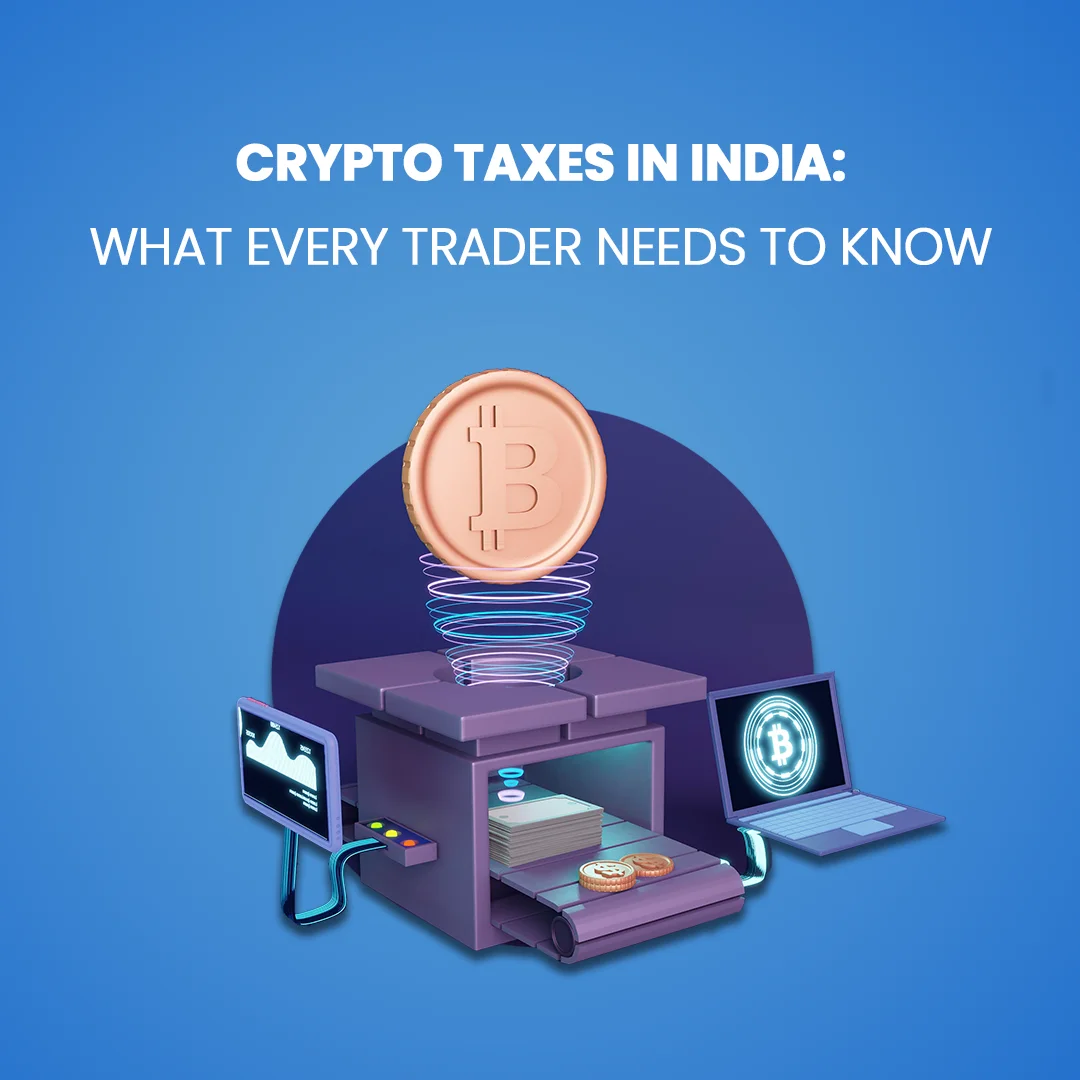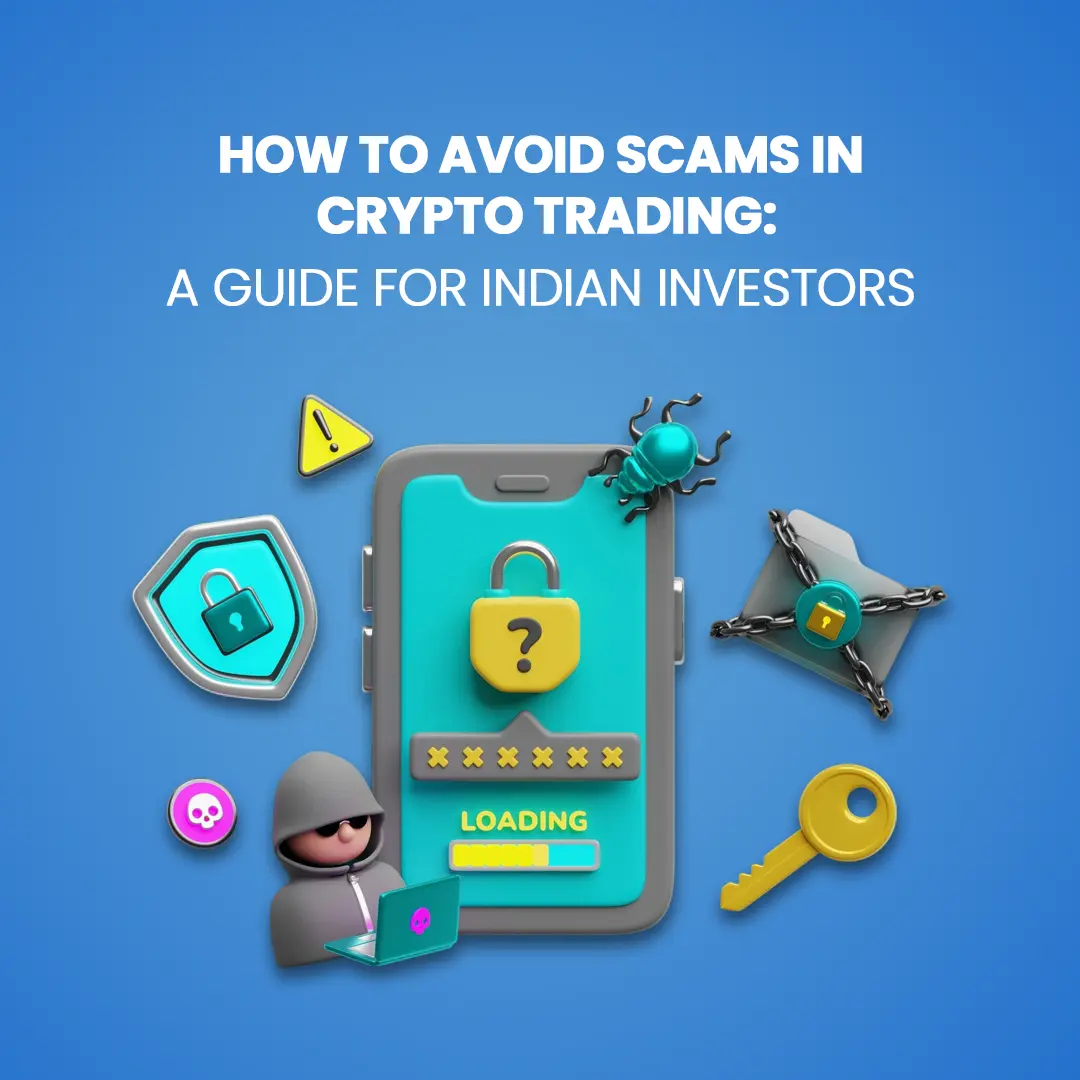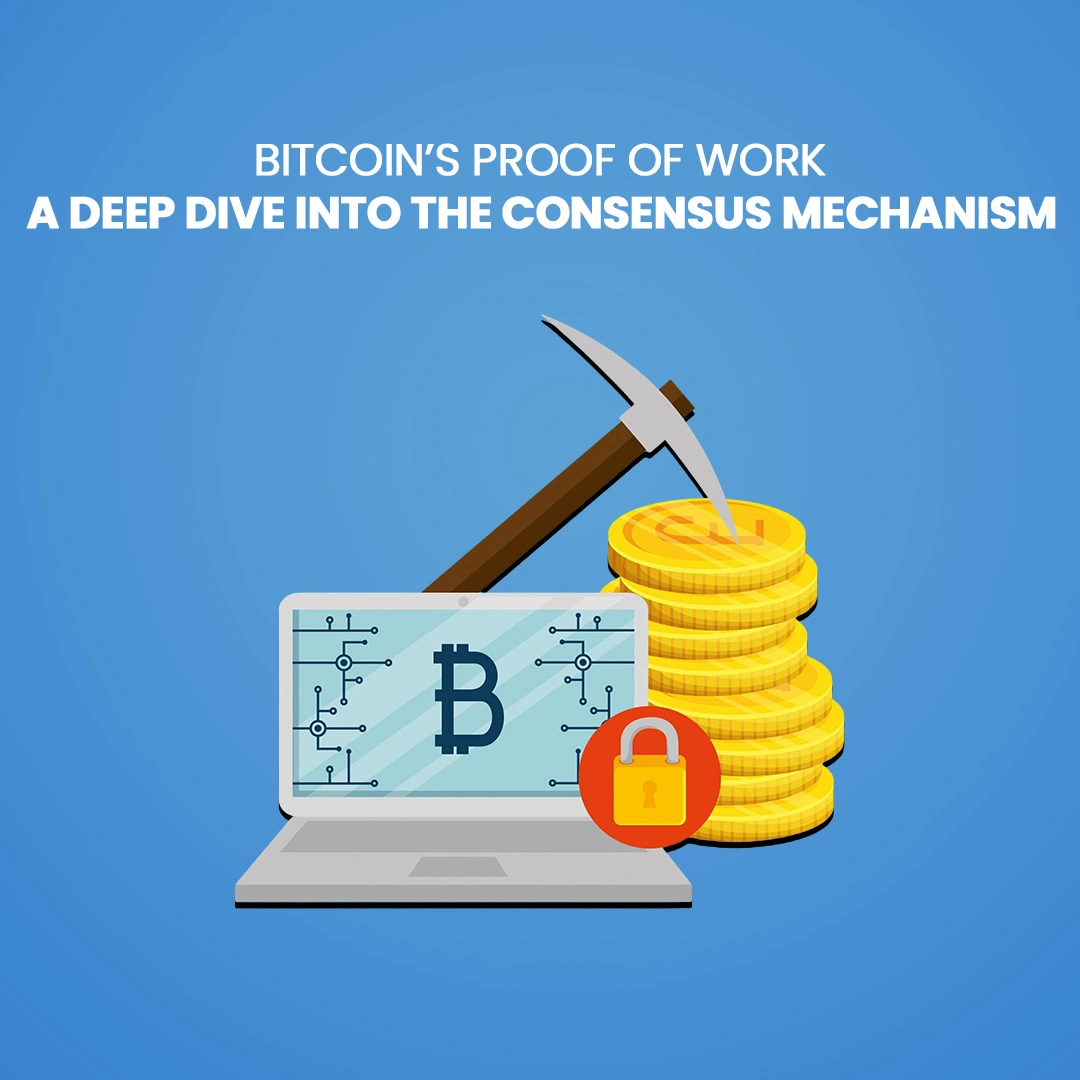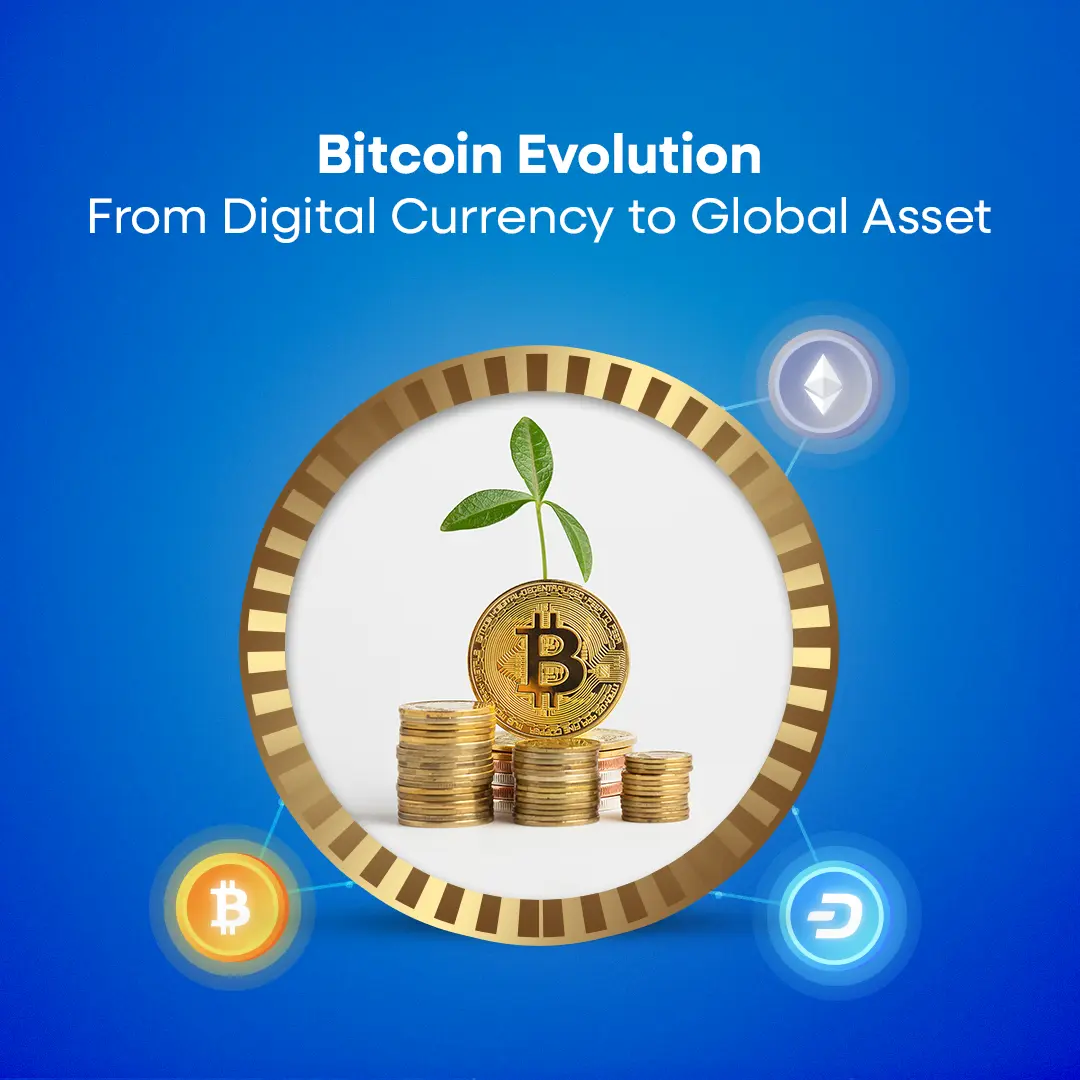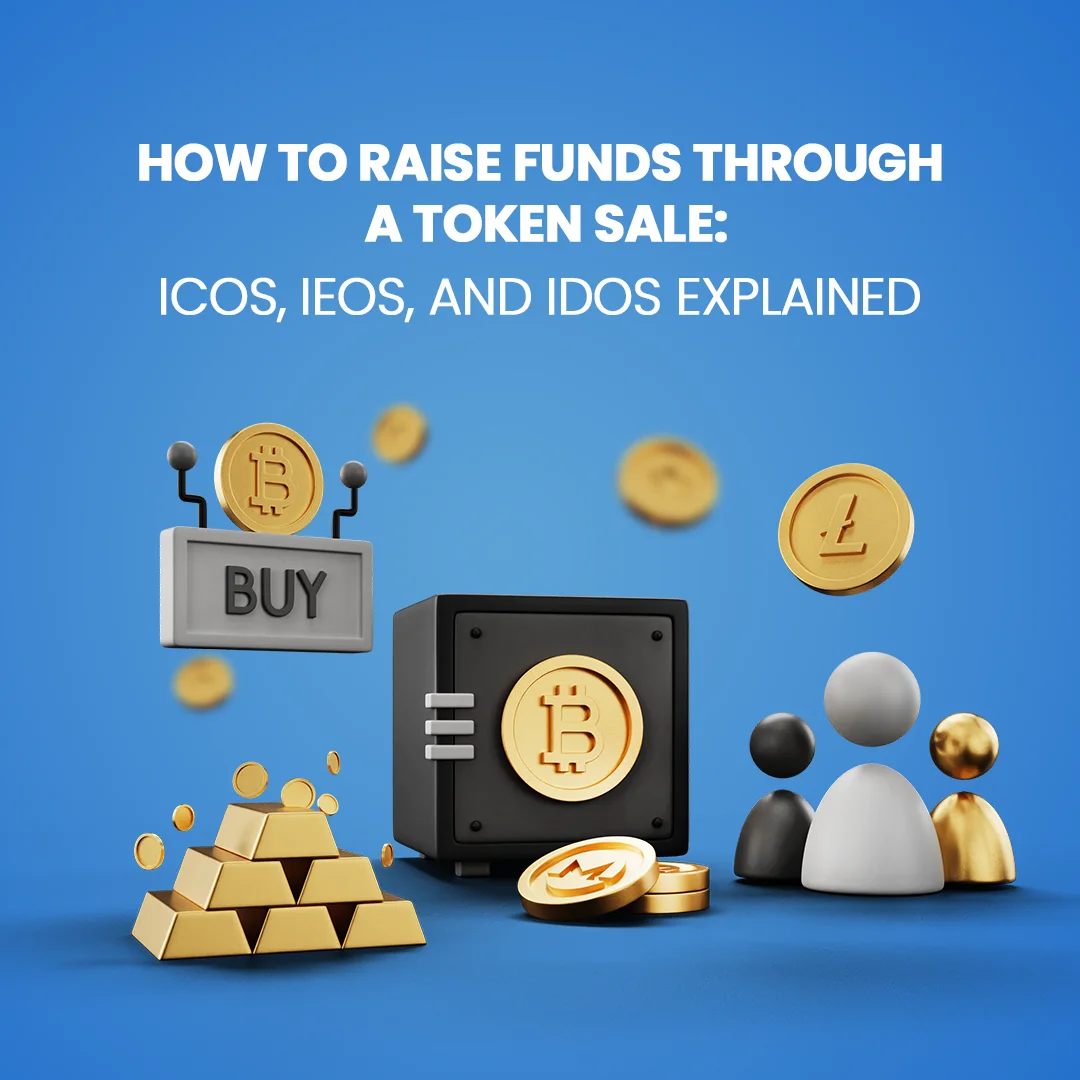

How to Raise Funds Through a Token Sale: ICOs, IEOs, and IDOs Explained
The blockchain industry has completely transformed how projects and businesses obtain funding. Blockchain projects increasingly resort to token sales to raise money, whether through an ICO, IEO, or IDO. Every strategy has distinct benefits, drawbacks, and characteristics. We will go into great detail about different fundraising methods in this article and help you choose the best one for your project. This guide includes something for everyone, regardless of experience level with cryptocurrency or inexperience investigating blockchain opportunities.
1. What does Token Sales mean?
Token sales entail providing investors with a project’s native tokens in return for money. Within the ecosystem of the project, these tokens frequently stand for a stake, utility, or governance rights. Token sales, in contrast to more conventional fundraising techniques, take place in a decentralized setting that uses blockchain technology to guarantee efficiency, accessibility, and transparency.
Token sales can be seen by novices as an early investment in the potential of a project. You purchase digital tokens that have the potential to appreciate in value if the project is successful, as opposed to stock in a firm. By using blockchain technology, token sales do away with the need for middlemen, which lowers expenses and makes investing more accessible. This invention has made it possible for projects to reach a global audience and for investors from all over the world to participate easily.
2. Understanding Initial Coin Offering (ICO)?
The earliest way to raise money through token sales was through an initial coin offering (ICO). Usually using their own website or platform, projects produce and sell their tokens directly to investors. By avoiding conventional funding channels, this strategy gives entrepreneurs access to possible supporters worldwide.
How Initial Coin Offerings Operate
Publishing of Whitepapers
A comprehensive whitepaper detailing the project’s vision, objectives, tokenomics, and technical roadmap is published. Whitepapers, which describe why a project is worth your investment, are similar to business proposals for novices.
Creation of Tokens
On a blockchain platform like Ethereum, smart contracts are used to mint tokens. Secure and automated transactions are guaranteed by these smart contracts.
Event for Token Sales
nvestors use fiat money or cryptocurrency to buy tokens during the initial coin offering (ICO). Beginners can join by using well-known wallets like MetaMask.
Distribution of Tokens
After being given to purchasers, tokens are subsequently posted on exchanges for open trading. Between 2017 and 2018, initial coin offerings (ICOs) raised billions of dollars and were extremely popular. However, because there was no regulatory control, there were frauds and failures, which made investors more cautious.
Benefits of initial coin offerings
Global Accessibility
Promoting inclusivity, anyone with an internet connection can take part. Simple instructions for creating a wallet and transferring money allow even novices to sign up.
Cost-Effectiveness
By cutting out middlemen, initial coin offerings (ICOs) save money for investors and projects alike.
Community Building
By actively participating in the project’s ecosystem, token holders frequently develop a devoted following.
Scalability
Without set caps, initial coin offerings (ICOs) enable projects to swiftly generate a sizable amount of money, facilitating quick expansion.
The challenges with ICOs
Regulatory Risks
Several jurisdictions have unclear legislation, which creates legal ambiguities.
Fraud & Scams
Since initial coin offerings are so transparent, fraudulent projects have been drawn to them. In order to confirm the project’s legitimacy, novices should investigate the team and collaborations.
Market Volatility
Following an ICO, token prices may fluctuate significantly, which may be intimidating to novice investors.
Overvaluation
By inflating token prices over their true value, speculative hype might result in possible losses.
Read Also: How to Avoid Scams in Crypto Trading
3. What is an Initial Exchange Offering (IEO)?
An IEO moves the fundraising process to cryptocurrency exchanges. These platforms serve as intermediaries, organizing and running the project’s token sale. Investors are reassured by the exchange’s legitimacy, which is enhanced by its reputation and screening procedure.
How IEOs Operate
Submission of an Application
Projects submit an application to list their token sale on an exchange.
Approval and Vetting
Exchanges carry out due diligence, assessing the project’s compliance and feasibility. This indicates that the exchange has conducted some background checks on the project for newcomers.
Launch of the Token Sale
Users can directly engage in the token sale, which is hosted by the exchange.
Immediate Listing
Following the IEO, tokens are listed for trading on the exchange, providing immediate liquidity.
Many successful IEOs have been made possible by well-known platforms like Binance Launchpad and OKEx Jumpstart, which give businesses access to sizable investor pools.
Benefits of IEOs
Credibility and Trust
Exchange vetting gives investors peace of mind about the project’s validity. Using reliable platforms makes investing safer for novice traders.
Integrated User Base
Projects can reach the exchange’s current investor base.
Regulatory Compliance
By managing KYC and AML standards, exchanges guarantee legal compliance, which is particularly advantageous for novices.
Assurance of Liquidity
Tokens are listed as soon as they are sold, which increases market confidence and provides quick trading opportunities.
Challenges with IEOs
High Costs
Exchanges impose significant hosting and listing fees, which limits the accessibility of IEOs for smaller projects.
Selective Access
Smaller projects may struggle to meet exchange standards, limiting diversity
Limited Control
The limitations set by exchanges limit the project’s autonomy and may have an effect on how it interacts with its community.
4. How does one define an Initial DEX Offering (IDO)?
An IDO launches and distributes currencies via decentralized exchanges (DEXs). This strategy offers a more transparent and community-driven approach to fundraising and is consistent with the ideas of decentralization.
How IDOs Operate
Token Creation
Projects create tokens and exchange them for a basic currency, such as Bitcoin or Ethereum.
Liquidity Pool Setup
Automated trading is made possible by adding tokens to a DEX liquidity pool. The new traders need to know that a liquidity pool is a collection of funds that makes trading easier.
Announcement and Launch
Projects let whitelisted participants know when the IDO is scheduled to take place.
Post-IDO Trading
Tokens are still tradable on the DEX, guaranteeing ongoing liquidity.
IDOs are now frequently hosted on platforms like Uniswap, PancakeSwap, and SushiSwap, which enable projects to effectively kickstart liquidity.
Benefits of IDOs
Decentralized Access
There are no centralized limitations on participation. Those that are new can sign up by linking their wallets to a DEX.
Reduced Costs
IDOs do away with exchanges’ exorbitant listing costs.
Community Ownership
Participants actively participate in the management and advancement of the initiative.
Instant Liquidity
After the IDO, tokens can be traded on the DEX immediately, guaranteeing a seamless market debut.
The challenges associated with IDOs
Volatility Risks
Because of the nature of the market, token prices are subject to significant swings.
Security Issues
Inadequate screening raises the possibility of fraud and faulty smart contracts. Projects with audited contracts are a good option for novices.
Technical Barriers
Although many platforms now provide user-friendly interfaces to make participation easier, non-technical individuals may find the procedure intimidating.
5. Selecting an Appropriate Fundraising Model
The ideal fundraising strategy depends on what you are creating, where you are creating it, and who you are creating it for. It is similar to choosing the best tool for a job. Which fundraising model—ICO, IEO, or IDO—is appropriate for you will depend on your project’s objectives, stage of development, and target audience.
Here is an outline of the subjects you should be thinking about.
1. Project Objectives
Your choice of fundraising model should be guided by the objectives of your project. Consider this:
Do you place a high value on community involvement?
If so, an IDO might be the most appropriate option because it encourages widespread, decentralized participation.
Are you trying to find quick funding?
Because IEOs use the exchange’s existing user base to get money more quickly, they might be a superior option.
Is adherence to regulations a primary concern?
As exchanges manage Know Your Customer (KYC) and Anti-Money Laundering (AML) processes, IEOs offer a controlled and legal setting.
Example:
To include players in their ecosystem, a firm developing a blockchain-based gaming platform can place a high priority on community involvement. To draw enthusiastic early adopters who will actively engage in the initiative, they can choose to use an IDO.
2. The phase of Development
Your decision will be greatly influenced by the stage of your project’s lifespan.
Are you in the conceptual stage?
An ICO can be the greatest option if you are still in the conceptual stage because it enables you to generate money using only a compelling idea and a well-written whitepaper.
Do you have a working prototype?
If you have a functional prototype, an IEO would suit you better since exchanges tend to evaluate the viability of projects before conducting token sales.
To reduce risks, new investors should concentrate on projects with definite deadlines and useful results.
For instance, an IEO may be selected by a renewable energy business with a functional blockchain-based energy trading prototype to convince investors about the legitimacy of their project by means of the exchange’s screening procedure.
3. Team Proficiency
Having a knowledgeable and experienced workforce is crucial for project management after funding.
Skilled workforce –
Determine if the members of your team possess the skills required to establish and preserve investor trust.
Look for valuable partnerships –
To increase your reputation, it could be a good idea to work with advisers or look for partnerships if your team lacks blockchain or cryptocurrency knowledge.
As an example,
Hiring a trustworthy blockchain consultant could improve the attractiveness and execution capabilities of your project if your team is composed of financial professionals but lacks technical blockchain experience.
4. Budgetary Limitations
The expenses related to each fundraising approach can differ greatly. ICOs tend to be the most economical option since they allow for direct fundraising without the need for intermediaries. IEOs can incur high costs due to the fees charged by exchanges for hosting and listing tokens. IDOs are positioned in the middle but may necessitate an initial investment to establish a liquidity pool. For instance, a small healthcare initiative might choose an ICO to evade the steep costs of exchange listings, enabling them to dedicate more resources to product development.
5. Timeline
The urgency of your project for funding influences the choice of fundraising model.
If you’re looking for quick funding, an IEO could be the most efficient route because of the existing user base on exchanges.
If you can afford to take more time, an ICO or IDO offers more flexibility in cultivating a community before the token sale.
For instance, a startup aiming to develop a social media platform may opt for an IDO to slowly foster a dedicated community of users and investors, aligning their funding schedule with their product development goals.
Therefore, these fundraising approaches may be considered as various routes that can be explored. If you’re inexperienced and uncertain, seek out projects that resonate with your principles, exhibit transparency, and showcase well-defined use cases. Grasping these elements will aid you in choosing the appropriate model while also fostering trust and confidence as you enter the realm of blockchain and cryptocurrency.
6. Tips for a Profitable Token Sale
Use these best practices to make your token sale as successful as possible:
Write a Strong Whitepaper
Clearly state the goals, value proposition, and schedule of your project. Whitepapers that are transparent and easy to grasp are what beginners should look for.
Engage Your Community
Encourage openness and trust by communicating openly and honestly.
Leverage Marketing
To create excitement and draw in investors, make use of partnerships, social media, and influencers. To be informed about future sales, beginners can follow these outlets.
Protect Your Infrastructure
To keep the investors safe, conduct audits and put strong security measures in place.
To sum up, token sales have revolutionized blockchain project fundraising by providing creative avenues for obtaining funding. Each approach, whether via ICOs, IEOs, or IDOs, addresses particular requirements and goals. You can select the best approach to realize your vision by comprehending its subtleties and coordinating them with the objectives of your project. This is a thrilling opportunity for newcomers to join the blockchain revolution and possibly back the next big idea. Make use of blockchain fundraising’s potential and go forward with your goals.
FAQs
A fundraising model in blockchain pertains to strategies such as ICO, IEO, or IDO used to gather funds through the sale of tokens.
Evaluate the objectives of your project, its current stage of development, the expertise of your team, your budget, regulatory considerations, and your funding timeline.
ICOs tend to be more cost-effective since they involve fewer intermediaries than IEOs or IDOs.
Adhering to regulations ensures your project meets legal standards, thereby minimizing the chances of facing penalties or shutdowns.
Projects that have functioning prototypes are generally better suited for IEOs or IDOs, whereas conceptual projects typically begin with ICOs.


